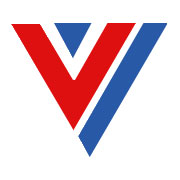鋪設(shè)海底電纜管道管理規(guī)定
發(fā) 文 號:國務(wù)院第27號令
發(fā)布單位:國務(wù)院第27號令
superintendence organs.When the State needs the relevant technical data for the exploitation ofmarine resources or for carrying out administration, the owners have theobligations to provide the competent authorities with further precise dataconcerning the submarine cables and pipelines.
Article 8The operations of laying submarine cables and pipelines and theinvestigations and surveying activities for the cable-and pipeline-layingengineering project shall not conducted beyond the approved sea areas; norshall operations and activities other than these approved be conducted inthe approved sea areas.Article 9In the event that changes or modifications in the approved operation planfor laying the submarine cables and pipelines are required before theoperations start or during the operations, the owners shall report thecase to the competent authorities in good time. If the changes ormodifications are of sizable proportions, the competent authorities maytake appropriate measures accordingly, up to ordering the owners to ceasethe operations.Article 10With respect to such operations as maintenance, alteration, dismantling,or abandonment of the submarine cables and pipelines, the owners shallsubmit a report on the said operations to the competent authorities inadvance. If a relatively big change is to be effected in the routes of thesubmarine cables and pipelines, the owners shall go through the relevantprocedures of application once again.When foreign vessels have the necessity to enter China's inland seas andterritorial seas to carry out activities in the maintenance, alteration,or dismantling of submarine cables and pipelines, the owners shall, inaddition to going through the procedures as prescribed in the firstparagraph of this Article, submit an application to the administrativedepartment concerned in China for approval, in accordance with thepertinent provisions of China's laws.When the damaged submarine cables and pipelines laid on China'scontinental shelves need emergency repairs, foreign maintenance vesselsmay enter the site to start the emergency repairs simultaneously with areport submitted to the competent authorities. However the said operationsshall not impair China's sovereign rights and jurisdiction.Article 11Operations such as the investigations and surveying activities foridentifying the routes for laying submarine cables and pipelines, thelaying, maintenance, and dismantling, must not hamper the normal order ofmarine navigation and transportation. The bits and pieces left over fromthe engineering project of laying submarine cables and pipelines and fromthe dismantling project shall be disposed of carefully and must not hamperthe normal order of marine navigation and transportation.
Article 12When the laying of submarine cables and pipelines and other marineengineering operations require that those submarine cables and pipelinesalready laid be moved, prior consultations must be conducted with theowners of the aforesaid installations and an approval must be obtainedfrom the competent authorities before the said engineering project starts.Article 13Operators who are engaged in various activities at sea must protect thesubmarine cables and pipelines that have already been laid. Those who havecaused damages to the said installations shall make compensationsaccording to law.In the event that disputes arise over the exploitation of the seas andoceans and the normal functioning of submarine cables and pipelines, thedisputes shall be mediated and handled by the competent authorities.Article 14The competent authorities shall have the power to supervise and inspectthe laying, maintenance, alteration, dismantling and abandonment ofsubmarine cables and pipelines as well as the relevant investigations andsurveying activities conducted for the laying of submarine cables andpipelines. The competent authorities may impose on violators of theseProvisions such penalties as warning, fine, up to an order to cease theiroperations at sea.The specific measures for imposing the penalties as mentioned in thepreceding paragraph shall be formulated by the competent authorities inconjunction with other competent authorities concerned under the StateCouncil.Article 15The plan for determining the routes for laying submarine cables andpipelines beyond the petroleum exploitation zones in order to exploitmarine petroleum resources shall be submitted to the competent authoritiesprior to the examination and approval of the overall plan for theexploitation of oil (and gas) fields; and the competent authorities shallgive approval after consultation with the competent state authorities forenergy resources.With respect to the laying of submarine cables and pipelines within themarine petroleum development zones between the drilling platforms orbetween drilling platforms and single berthing points, the owners shall,before the start of the investigations and survey of routes for the layingof submarine cables and pipelines and the start of cable-and pipeline-laying operations, submit a report specifying the contents as provided inArticle 5 and Article 6 of these Provisions to the competent authoritiesfor the record.
Article 16With respect to the operational activities such as laying, maintenance,alteration, dismantling and abandonment of submarine cables and pipelines,as well as the investigations and surveying activities conducted foridentifying the routes for laying the submarine cables and pipelines, incase there are any aspects which are not covered in these Provisions, theProvisions in other relevant State laws, decrees and regulations shallapply.Article 17The laying of submarine cables and pipelines for military purposes in thePeople's Republic of China shall be handled in accordance with theseProvisions. The armed forces may formulate specific rules for theimplementation of these Provisions.Article 18The competent authorities shall collect data concerning submarinetopography and the distribution of structures at sea in order to offerconsultancy services for laying of submarine cables and pipelines, and forconducting relevant investigations and surveying activities.Article 19The term "cables", as used in these Provisions, refers to communicationscables and electric cables; the term "pipelines" refers to the pipe-shapedconveying and transporting installations used for conveyance of water,gas, oil and other substances.Article 20The right to interpret these Provisions resides in the State OceanographicBureau of the People's Republic of China.Article 21These Provisions shall go into effect on March 1, 1989.

 關(guān)于加強(qiáng)發(fā)電機(jī)組檢修安全管理的通知
關(guān)于加強(qiáng)發(fā)電機(jī)組檢修安全管理的通知 關(guān)于開展2024年度電力建設(shè)施工安全和…
關(guān)于開展2024年度電力建設(shè)施工安全和… 關(guān)于做好電力設(shè)施森林草原火災(zāi)防范應(yīng)…
關(guān)于做好電力設(shè)施森林草原火災(zāi)防范應(yīng)… 關(guān)于切實(shí)做好電力建設(shè)工程開復(fù)工安全…
關(guān)于切實(shí)做好電力建設(shè)工程開復(fù)工安全… 2024年電力安全監(jiān)管重點(diǎn)任務(wù)
2024年電力安全監(jiān)管重點(diǎn)任務(wù) 關(guān)于進(jìn)一步加強(qiáng)水電站安全生產(chǎn)工作的…
關(guān)于進(jìn)一步加強(qiáng)水電站安全生產(chǎn)工作的… 電力建設(shè)工程質(zhì)量監(jiān)督機(jī)構(gòu)考核管理辦法
電力建設(shè)工程質(zhì)量監(jiān)督機(jī)構(gòu)考核管理辦法 國家能源局行政處罰案件案由規(guī)定
國家能源局行政處罰案件案由規(guī)定